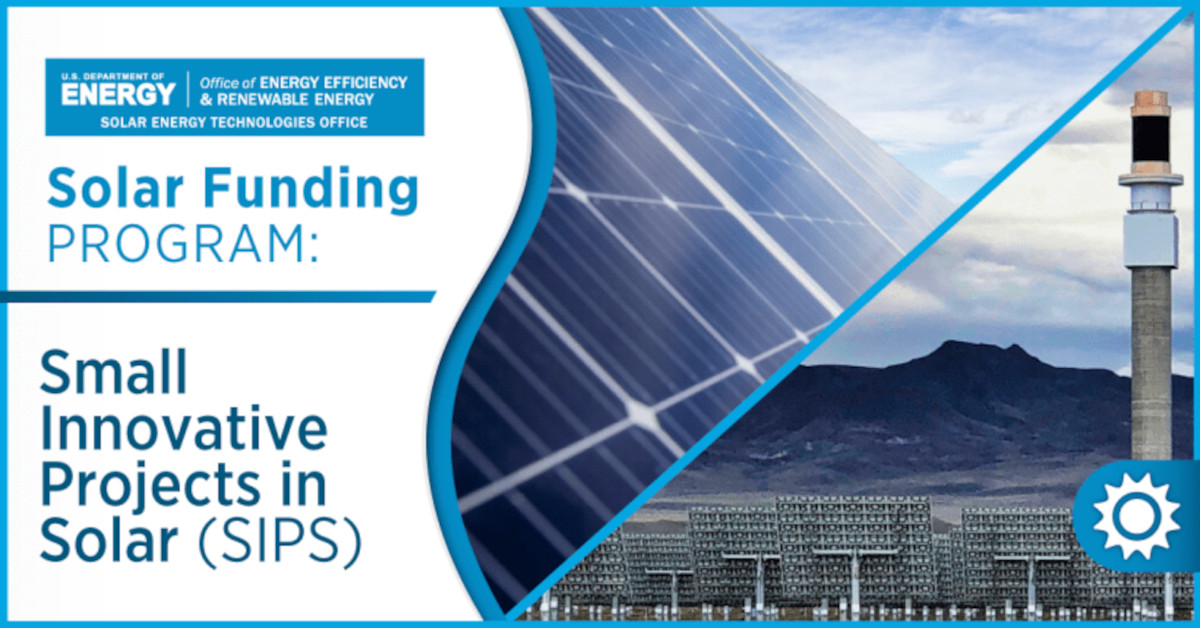The U.S. Department of Energy (DOE) Solar Energy Technologies Office (SETO) Small Innovative Projects in Solar (SIPS) 2024 funding program provides $5.4 million for seedling R&D projects that focus on innovative and novel ideas in photovoltaics (PV) and concentrating solar-thermal power (CSP) and are riskier than research ideas based on established technologies.

The 16 selected projects were recently announced, among them were 5 perovskite-related projects.
Georgia Tech Research Corp. received $250,000 for a project titled: Low-cost Metrology Advancement for Perovskite Defect Quantification due to Environmental Stressors. This project aims to develop an instrument to test for defects in perovskite thin films by degrading perovskite devices and analyzing them. If successful, the instrument could be integrated into high-performance manufacturing lines and testing protocols, resulting in more accurate, reliable, and accelerated stability protocols for metal halide-perovskite photovoltaics (PV), increasing PV system lifetimes.
National Renewable Energy Laboratory (NREL) received $250,000 for a project titled: Visualizing Local Electric Fields with 4D STEM: Accessing the Missing Link for PV Device Optimization. This project aims to use scanning transmission electron microscopy (STEM) to demonstrate how perovskite interfaces change when operated under light, and how new materials can improve performance in cadmium telluride. The primary objective of this project is to develop an advanced STEM technique that can be routinely applied within the photovoltaics (PV) research community and enable advancements in thin-film PV material cell efficiency and durability.
Purdue University received $250,000 for a project titled: ITO-Free and Rollable Perovskite Solar Cells. This project seeks to introduce an innovative material for an electrically conductive transparent front layer of a perovskite module which would be easier to manufacture than the currently used indium tin oxide (ITO). This transparent conductive layer could be used to create flexible, high-efficiency, and cost-effective perovskite solar modules. Through this strategy, a fully rollable perovskite solar cell—with a bending radius smaller than one millimeter and a power conversion efficiency of over 18%—will be demonstrated. This project could enable a shift from costly, inflexible ITO module front layers to those that are flexible, cheap, and easily processed for perovskite photovoltaics and deliver on the promise of low cost solar.
University of California San Diego received $250,000 for a project titled: Bilithic Integration of Perovskite Solar Modules. This project seeks to develop a new approach to thin-film photovoltaic (PV) module fabrication to streamline manufacturing. This approach leverages the properties of perovskites in a “bilithic” integration of the module, which in contrast to a monolithic integration, allows independent processing of the top and bottom of the module and then sandwiching the two sides together. This approach enables new possibilities for how perovskite layers are arranged for better overall PV performance and easier manufacturing.
University of Miami received $250,000 for a project titled: Inorganic Charge Transport Layers via Atomic Layer Deposition for Perovskite Solar Cells and Minimodules. This project seeks to improve perovskite cells by using a novel approach which offers precise control over material composition and thickness to mitigate issues with perovskite stability. By the end of the project, the team will apply this approach to both cells and minimodules to demonstrate relevance to the photovoltaics industry.



